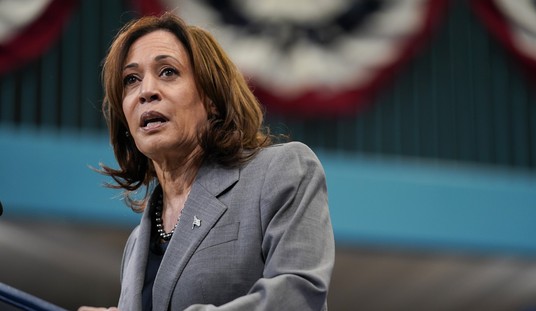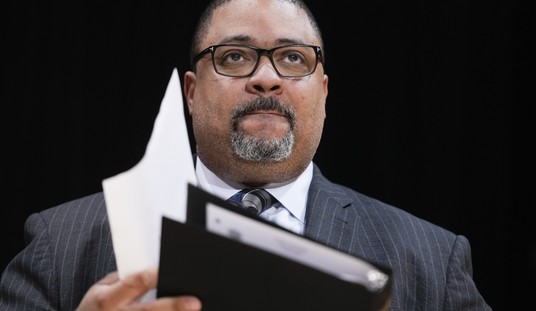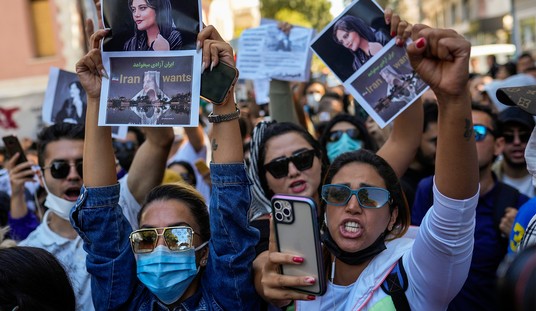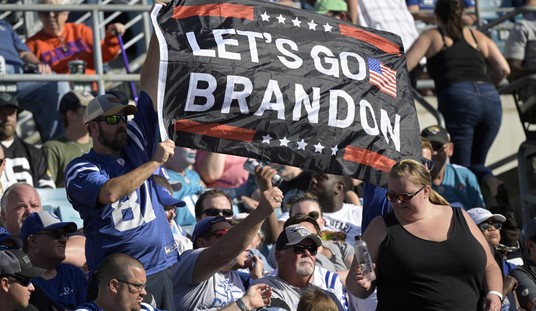After last night’s contests, it’s time to update my running tallies of the popular vote in the GOP presidential primary and see what further conclusions can be drawn. I continue to break out the votes in three groups – the five conservative candidates (Santorum, Gingrich, Perry, Bachmann and Cain), the two moderate candidates (Romney and Hunstman) and the libertarian (Paul) – for reasons explained in my last post. Also, the numbers through Super Tuesday have changed slightly from the last post, as more complete tallies in some states have become available. This time I’m including the Wyoming results in the totals, but not the tiny vote totals from the territories (the Northern Mariana Islands and U.S. Virgin Islands; no popular vote totals are available from Guam or American Samoa).
I. Popular Vote Totals To Date
Let’s look at how the week of contests since Super Tuesday stacks up against the popular vote count up to then:
| Candidate | Votes Thru 3/6 | % | Votes 3/10-3/13 | % | TOTAL | % |
|---|---|---|---|---|---|---|
| Romney | 3,238,971 | 39.2% | 275,023 | 29.3% | 3,513,994 | 38.2% |
| Santorum | 2,082,469 | 25.2% | 323,184 | 34.5% | 2,405,653 | 26.1% |
| Gingrich | 1,820,340 | 22.0% | 273,927 | 29.2% | 2,094,267 | 22.8% |
| Paul | 926,245 | 11.2% | 48,610 | 5.2% | 974,855 | 10.6% |
| Huntsman | 66,544 | 0.8% | 1,467 | 0.2% | 68,011 | 0.7% |
| Perry | 43,834 | 0.5% | 3,171 | 0.3% | 47,005 | 0.5% |
| Bachmann | 19,786 | 0.2% | 2,616 | 0.3% | 22,402 | 0.2% |
| Cain | 13,601 | 0.2% | 39 | 0.0% | 13,640 | 0.1% |
| Conservatives | 3,980,030 | 48.2% | 602,937 | 64.3% | 4,582,967 | 49.8% |
| Moderates | 3,305,515 | 40.0% | 276,490 | 29.5% | 3,582,005 | 38.9% |
| Libertarians | 926,245 | 11.2% | 48,610 | 5.2% | 974,855 | 10.6% |
| TOTAL | 8,263,696 | 937,477 | 9,201,173 |
Let’s take a different angle and break that out by month:
| JANUARY | % | FEBRUARY | % | MARCH | % | |
|---|---|---|---|---|---|---|
| Romney | 1,071,678 | 40.5% | 741,495 | 39.8% | 1,700,821 | 36.3% |
| Santorum | 378,995 | 14.3% | 692,296 | 37.1% | 1,334,362 | 28.4% |
| Gingrich | 817,770 | 30.9% | 160,360 | 8.6% | 1,116,137 | 23.8% |
| Paul | 278,729 | 10.5% | 215,023 | 11.5% | 481,103 | 10.3% |
| Huntsman | 50,049 | 1.9% | 2,817 | 0.2% | 15,145 | 0.3% |
| Perry | 23,592 | 0.9% | 6,293 | 0.3% | 17,120 | 0.4% |
| Bachmann | 10,856 | 0.4% | 3,480 | 0.2% | 8,066 | 0.2% |
| Cain | 10,046 | 0.4% | 3,555 | 0.2% | 39 | 0.0% |
| Conservatives | 1,241,259 | 47.0% | 865,984 | 47.4% | 2,475,724 | 53.0% |
| Moderates | 1,121,727 | 42.5% | 744,312 | 40.8% | 1,715,966 | 36.7% |
| Libertarians | 278,729 | 10.6% | 215,023 | 11.8% | 481,103 | 10.3% |
| TOTAL | 2,641,715 | 1,825,319 | 4,672,793 |
Before opponents of Mitt Romney get too excited here, it’s important to remember that three of the past week’s four contests were on very unfavorable turf for Romney: the Kansas caucus came in a state where the GOP has a very strong pro-life conservative contingent (Sam Brownback is the governor, after all), and the primaries in Deep South states Alabama and Mississippi are tough sells for a Massachusetts moderate (although the Mississippi GOP is very establishment-minded; there are few red states in which the Tea Party has less influence). The next five weeks feature a battery of states, some of them quite rich in delegates and a number of them winner-take-all, where Republicans are more accustomed to nominating guys like Romney – Illinois, New York, Pennsylvania, Wisconsin, Maryland, Connecticut.
That said, especially after Romney’s team made the mistake of talking up his chances in Mississippi (where he finished third), this has been a rough week for him in the popular vote, salvaged only by the continuing division among the conservative bloc. The conservatives drew at least 64% of the vote in all three states to less than 30% for the moderates, and Newt Gingrich alone ran almost even with Romney even when you include Hawaii, which Romney won. Month-to-month, Romney’s share of the vote has been declining even as the field narrows, with the conservatives drawing a clear majority of the votes cast in March (aided as well by poor showings by Ron Paul in the Deep South) despite not even being on the ballot in Virginia. Neil has more.
None of this means that Romney will not be the nominee. Barack Obama lost the popular vote to Hillary Clinton after March 1 by 600,000 votes, and still won the most delegates; even if this race finally devolved into a 2-man race and Romney started losing head-to-head battles with Rick Santorum, he’d still probably take the nomination. And as of now, even if Romney can’t win over a majority faction of the party, he has still outpolled any other one candidate.
There are, in my view, three groups of voters to watch to see if the primary breaks out of its current groove:
First, the Newt voters. Newt needed wins last night in Alabama and Mississippi to re-establish himself as at least a regional candidate. He didn’t get them, and it’s hard to see where else he’ll find more favorable conditions. Like Erick, I think it’s time for Newt to exit and let this be a 2-man showdown between Romney and Santorum (Paul doesn’t need to get out, his voters aren’t going anywhere else). Newt has enough delegates already to have a little leverage if there’s a contested convention, but he has no path to the nomination in his own right, there’s no way a deal made with Beltway Republicans is going to end with him in either position on the ticket, and unlike Paul he’s not representing a wholly distinct faction of the party. If Newt leaves, or if his remaining supporters give up on him, I’d assume the majority will go to Santorum – but Romney would at least have the opportunity to convince some who are uncomfortable with Santorum, and that could change the popular vote dynamics.
Second are the Momentum voters, who haven’t really appeared in significant numbers yet (although they do represent some part of why Romney has pushed up to the mid-30s from the 25% position he was stuck at in national polls for all of 2011). Momentum voters may not love or even like Romney, but they’re voters who will get behind the frontrunner and who, in GOP primaries, traditionally step in to end the contest (except in 1976, when if anything they went increasingly to Reagan down the stretch – but then, he was Reagan. Over the 1968, 1976 and 1980 primaries combined, he drew 51.9% of the popular vote). Except so far, they haven’t – I thought we were seeing momentum at last when exit polls suggested a Romney win in Mississippi, but it didn’t happen.
Third are their opposite – the Bitter Enders, which is largely the class I’m in at this point. These are the voters who have come around to the view that Romney will be the nominee, but will nonetheless go to the polls to cast ballots against him to register their protest at having such a candidate head the party. Paradoxically, Romney’s best bet for getting the Bitter Enders to stop voting against him is to play up the possibility that Santorum will win (forcing people to think twice about the consequences of voting for him), or at any rate force a contested convention that could handicap the ticket in the fall. Pretty much everyone who’s still casting votes for Perry, Bachmann and Hunstman is in this category, and I’d wager a fair number of the Newt voters as well (I won’t decide for a while yet who to actually vote for on April 24).
II. State By State
Here, I’ve updated the table of states (also included here are the two territories with popular votes released, the Northern Mariana Islands and U.S. Virgin Islands), ranked by the conservative bloc’s share of the popular vote.
| STATE | Conserv | Mod | Libert |
|---|---|---|---|
| GA 3/6 | 67.1% | 26.1% | 6.6% |
| KS 3/10 | 65.9% | 21.1% | 12.6% |
| MS 3/13 | 65.0% | 30.5% | 4.4% |
| AL 3/13 | 64.4% | 29.2% | 5.0% |
| OK 3/6 | 62.1% | 28.3% | 9.6% |
| TN 3/6 | 61.8% | 28.3% | 9.0% |
| SC 1/21 | 58.9% | 28.0% | 13.0% |
| MO 2/7 | 57.7% | 25.8% | 12.2% |
| MN 2/7 | 55.7% | 16.9% | 27.2% |
| IA 1/3 | 53.2% | 25.1% | 21.4% |
| CO 2/7 | 53.2% | 34.9% | 11.8% |
| OH 3/6 | 52.3% | 38.5% | 9.2% |
| ND 3/6 | 48.2% | 23.7% | 28.1% |
| FL 1/31 | 46.1% | 46.8% | 7.0% |
| MI 2/28 | 44.9% | 41.3% | 11.6% |
| AK 3/6 | 43.4% | 32.5% | 24.1% |
| AZ 2/28 | 43.2% | 47.3% | 8.4% |
| WY 2/29 | 39.9% | 39.2% | 20.9% |
| HI 3/13 | 36.3% | 45.4% | 18.3% |
| WA 3/3 | 34.1% | 37.6% | 24.8% |
| VT 3/6 | 32.8% | 41.7% | 25.5% |
| NV 2/4 | 31.1% | 50.1% | 18.8% |
| ME 2/11 | 24.7% | 38.0% | 36.1% |
| ID 3/6 | 20.3% | 61.6% | 18.1% |
| NH 1/10 | 19.8% | 56.1% | 22.9% |
| MA 3/6 | 17.3% | 73.1% | 9.6% |
| USVI 3/10 | 10.7% | 26.3% | 29.2% |
| NMI 3/10 | 9.6% | 87.3% | 3.2% |
| VA 3/6 | 0.0% | 59.5% | 40.5% |
As you can see, the conservatives have now drawn a majority in 12 states (including cracking 60% of the vote in 6 states in or around the South), and a plurality in 4; the moderates have drawn a majority in 6 (including Virginia), and a plurality in 5 plus the Northern Mariana Islands; the libertarians drew a plurality only in the U.S. Virgin Islands, where the uncommitted vote was more than a third of the vote. The only state primaries where a majority voted for the moderate candidates, given a choice, have been Massachusetts and New Hampshire.
III. Primaries vs Caucuses
| STATE | Caucuses | % | Primaries | % |
|---|---|---|---|---|
| Romney | 144,017 | 33.3% | 3,102,254 | 36.8% |
| Santorum | 129,087 | 29.9% | 2,276,566 | 27.0% |
| Gingrich | 51,552 | 11.9% | 2,042,715 | 24.2% |
| Paul | 88,030 | 20.4% | 886,825 | 10.5% |
| Huntsman | 823 | 0.2% | 67,188 | 0.8% |
| Perry | 12,646 | 2.9% | 34,359 | 0.4% |
| Bachmann | 6,090 | 1.4% | 16,312 | 0.2% |
| Cain | 97 | 0.0% | 13,543 | 0.2% |
| Conservatives | 199,472 | 46.1% | 4,383,495 | 51.9% |
| Moderates | 144,840 | 33.5% | 3,169,442 | 37.6% |
| Libertarians | 88,030 | 20.4% | 886,825 | 10.5% |
| TOTAL | 432,342 | 8,439,762 |
The four new contests don’t do a lot to change the overall picture I noted before, in which Ron Paul is much stronger in caucuses, Newt Gingrich in primaries. But note that the conservative bloc has now passed 50% of the vote in primaries.
(I’ll skip the turnout comparisons to 2008, as we’re now far enough into the primary schedule that the comparisons are now truly apples to oranges. But I will note that Ron Paul continues to draw significantly larger numbers of voters than in 2008).














Join the conversation as a VIP Member